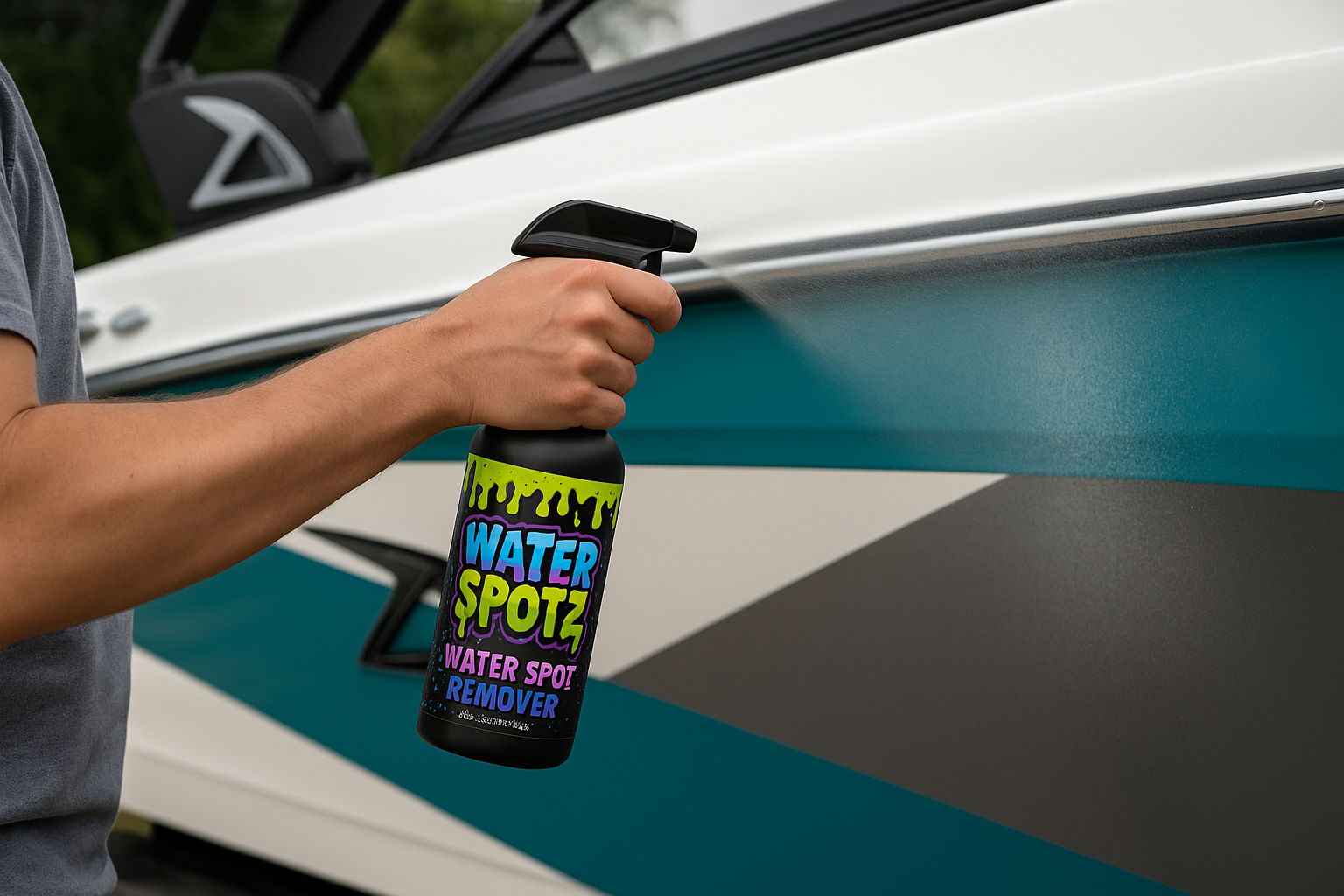Hard water spots on boats are not merely cosmetic—they are the visible outcome of a chemical process involving the deposition and adhesion of alkaline minerals such as calcium carbonate and magnesium. These mineral residues, often amplified by heat and sunlight, can etch into gelcoat, glass, and marine vinyl surfaces, leaving behind a chalky, bonded layer that cannot be removed by traditional soaps alone.
Understanding the Chemistry of Water Spot Removers
To effectively eliminate water spots, most marine-grade cleaners rely on acid-based actives—such as urea hydrochloride, oxalic acid, or citric acid. These acids function by dissolving alkaline mineral deposits through a process of neutralization. However, in doing so, they temporarily lower the surface pH and strip away any existing surface protection, including waxes, polymers, or previous ceramic coatings.
What remains is a decontaminated but chemically unstable surface. This condition, though ideal for reconditioning, is not protective on its own.
Why Neutralization Is Scientifically Required
Following the use of any acid-based water spot remover, the surface of a boat is typically left in a low pH (acidic) state. If this pH imbalance is not corrected, the surface remains vulnerable to recontamination, oxidation, and UV degradation. More critically, attempting to apply a protectant—especially a ceramic or polymer-based coating—onto an un-neutralized surface severely compromises its bonding efficacy.
Neutralization, typically achieved through a pH-balanced rinse or dedicated neutralizing wash, serves to restore chemical equilibrium (approximately pH 7), allowing subsequent protective layers to bond properly and perform as intended.
The Incompatibility of SiO₂ Sealants and Acidic Cleaners
Silicon dioxide (SiO₂) sealants, widely used in marine and automotive detailing, are based on sol-gel or silane crosslinking chemistry. These formulations require:
-
A chemically neutral, residue-free surface
-
Absence of surfactants or acidic compounds
-
Proper curing conditions (usually air-dried and moisture-tolerant)
Acidic conditions, however, disrupt the crosslinking process by preventing the hydrolysis and condensation reactions necessary for SiO₂ molecules to form a continuous, bonded film. As a result, any product that attempts to simultaneously deliver acidic cleaning and ceramic protection is, by nature, internally self-defeating.
Such a formula compromises both functions:
-
The acid inhibits the integrity and performance of the ceramic component
-
The SiO₂ component reduces the efficacy of the acid in dissolving mineral buildup
No scientific formulation currently exists that can deliver high-performance water spot removal and true ceramic protection simultaneously without compromising one or both processes.
Recommended Protocol for Proper Surface Care
A scientifically sound approach to water spot removal and protection involves three distinct steps:
-
Decontamination
Apply an acid-based water spot remover to dissolve mineral deposits and strip away surface contamination.
-
Neutralization
Rinse or wash the treated area with a neutral-pH solution to rebalance surface chemistry and prepare it for protection.
-
Protection
Apply a standalone ceramic sealant or polymer protectant to form a durable, UV-resistant, hydrophobic barrier.
This sequential method aligns with both chemical compatibility and performance optimization.
Conclusion
Products labeled as “Water Spot Remover + SiO₂ Ceramic Sealant” may appear efficient on the surface, but they are chemically incompatible by design. Such formulations cannot provide effective mineral removal and simultaneous ceramic protection in a single application without compromising one—or both—outcomes.
For long-term surface health, clarity, and protection, a disciplined approach rooted in chemistry is not optional—it’s essential.



Share:
The Truth About Boat Oxidation Removal: Why Wet-Sanding Isn’t Always the Answer
Embracing Change: Marine Detailing, and the Divide Between Progress and Fear